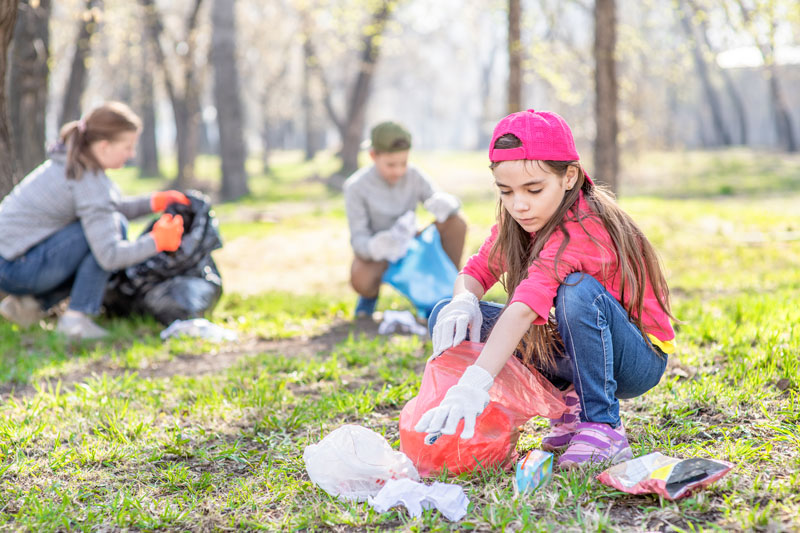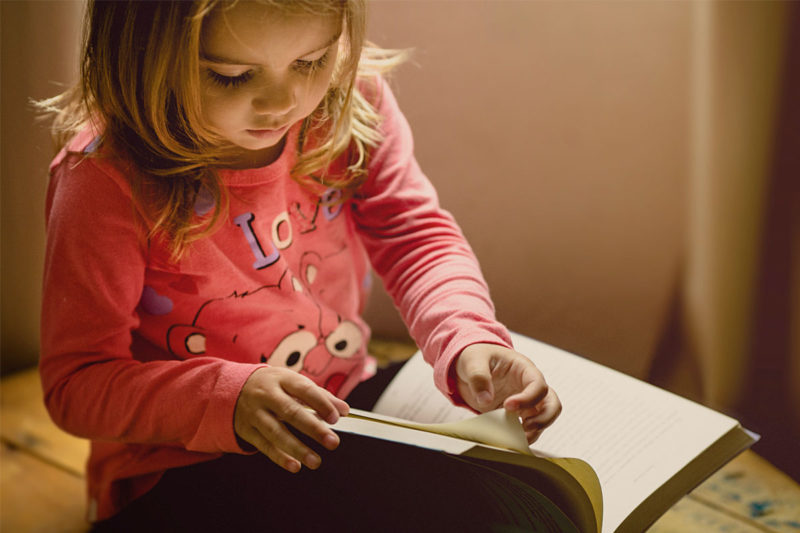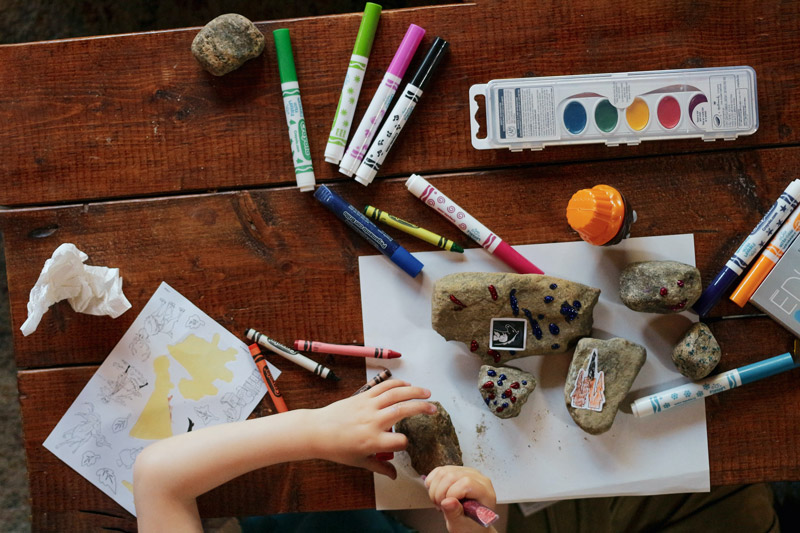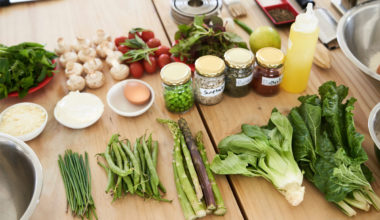We try to take a little more action each day to make for a cleaner planet. But how do we pass the baton onto children? Here are 6 simple eco-friendly habits to introduce to children to have them embrace an eco-friendly lifestyle, foster their environmental awareness and make our kids the future defenders of our Earth.
Children voice strong demand for initiatives to protect nature, and we would be wrong in thinking that they are not capable of committing. They absolutely are! They are the first to want to take positive action, and take part in eco-friendly family initiatives. That way, we can help them to embrace respectful behaviour and develop their environmental awareness for the future.
1- Préférer les courses en vrac
Begin by explaining that waste disposal is costly, and polluting, but that we don’t have to buy the packaged products that we see everywhere. So instead of going to the supermarket, head for the zero-waste grocery store or the organic shop taking little paper or fabric bags along. Go through the aisles together and read the labels. Show your children how to position the bag under the dispenser, and then let them take care of it! You can compare the weights of the bags, show them what 1 kg or 500 g look like. These days you can buy anything loose in some standard grocery chains or in specialist stores, from flour to laundry detergent! Take a look around your local area: there’s bound to be a zero-waste grocery store nearby.
- Benefits for the planet: fewer packaging items and therefore less waste.
- Benefits for the child: learning how to make choices; learning how to weigh things and understanding that we can make different choices.
2- Planting flowers for pollinating insects

This activity makes it possible to talk to children for the first time about the following: the role of pollinating insects that carry male pollen to female flowers; how plants develop blossom that turns into fruit which then goes to seed, and the balance between different types of insects. Just buy packets of seeds such as “flower seed mix” or “bee-friendly meadow mix” and scatter them around the town or city. While taking a walk, home in on every little bit of earth: around tree trunks, in the park or even on your own balcony. You can also make “flower bombs” by mixing clay, coconut fibres and flower seeds together. Roll the mixture into balls and leave them to dry. Then you can throw them far over the fence and see them come into bloom in spring. Flowering plants offer nectar and pollen to a great many pollinating or auxiliary insects. In doing so they attract aphids, which attract the ladybirds that eat them, as well as bees, and also birds drawn to flower seeds like those of the sunflower. The cherry on the cake: an “insect farm”, a kind of little hut for them to live in (see the many tutorials available on the Internet).
- Benefits for the planet: helping to maintain local biodiversity.
- Benefits for the child: understanding the primordial role of pollinating insects in the plant reproduction cycle.
3- Spending a week living with only the bare essentials
Explain to children what the dangers of overconsumption are; that every item produced will have used up some resources and polluted the planet; and that it’s important to buy fewer products, but better ones. This is an initiative that will put the emphasis on all the activities that don’t involve purchasing anything: go for a walk, draw pictures, read stories, start playing with long-forgotten toys again, clear out the kitchen cupboard and the tinned / jarred foods that are hanging around. It’s also an opportunity to realise that patience is a virtue, and to distinguish between wants and needs. A 7-day challenge that puts the whole family to the test.
- Benefits for the planet: not using resources; not generating pollution or waste.
- Benefits for the child: showing them that we are free to break free of consumerism whenever we feel the need to.
4- Making a compost heap
Making a compost heap as a family is the perfect way to learn how foodstuffs decompose, as well as being a fun, useful activity. You can just pile up organic waste, fruit and vegetable peel and food waste in a crate at the bottom of the garden. Be warned, though, that it will attract insects. We recommend taking a large container, placing a mix of soil, hay and/or grass in the bottom and putting your organic waste on top, covering it regularly with garden matter (weeds, leaves, soil). What’s the idea here? To make a “layer cake” of green and brown matter to reach the nitrogen/carbon balance necessary for successful composting. This is an opportunity to explain that the soil gets enriched by organic waste, which feeds plants, and that compost is an excellent natural fertiliser.
- Benefits for the planet: dustbins that are lighter, smaller and therefore cheaper; richer soil.
- Benefits for the child: understanding the cycle of nature, and how things are restored to the earth.
5- Organise a litter pick-up operation

It’s very easy to get a litter pick-up operation going. It’s a really good way of fostering awareness of littering issues in young people, while clearing up the natural environment, whether at the beach, in a town or city, in the countryside or in the mountains. It can be done as a family, with friends or neighbours. Single out an area and pick up litter in adult/child pairs. Have gloves and collection bags ready. You can either go up and down an area, or tackle a flytipping spot and take a nice set of before/after photos. The kids will be so proud of themselves!
- Benefits for the planet: less plastic waste and litter of all kinds to pollute the natural environment.
- Benefits for the child: Awareness of the “common good”. We pick up litter ourselves, even if someone else dropped it.
6- Launch an offensive against cigarette butts
You can get a cigarette butt pick-up operation going along the same lines as the previous example, but with a more militant mindset. Work together on campaign materials to dissuade citizens from throwing their cigarette butts down in the natural environment: a flyer to give out, making pocket ashtrays, spreading the word locally: in your street, by talking to shop staff, or to the local council to have street ashtrays fitted. Children can also give a presentation in class to explain that cigarette butts are made from plastic; that they are not biodegradable; that they are harmful if they end up in the sea (a single cigarette butt can pollute 500 litres of water); and that they can be ingested by marine animals. Not forgetting the harm caused to human health.
- Benefits for the planet: fewer cigarette butts, less pollution.
- Benefits for the child: learning how to seek out information and support a cause; knowing that children can impart information to adults.
And also:
- Make an upcycled toy or piece of furniture, and repair a broken item to show that you don’t have to buy everything new.
- Recognise and shun plastic items: that plastic bag offered at the till; mass-produced items that you can make yourself, etc..
- Start a petition: on a worrying situation in your local area like a flytipping spot; a company generating pollution; worries over animal welfare in the area.
- Save energy and water by turning lights and taps off when they no longer need to be on; by filling the bathtub only halfway; by taking short showers; by reducing the water volume in the toilet cistern.
Children are very much willing and always keen to protect the natural environment. If, along the way, we can teach them to reduce waste and overconsumption, and show them that by working together, much can be achieved… The seeds are sown for a future that’s more considerate of nature, with greater solidarity.









